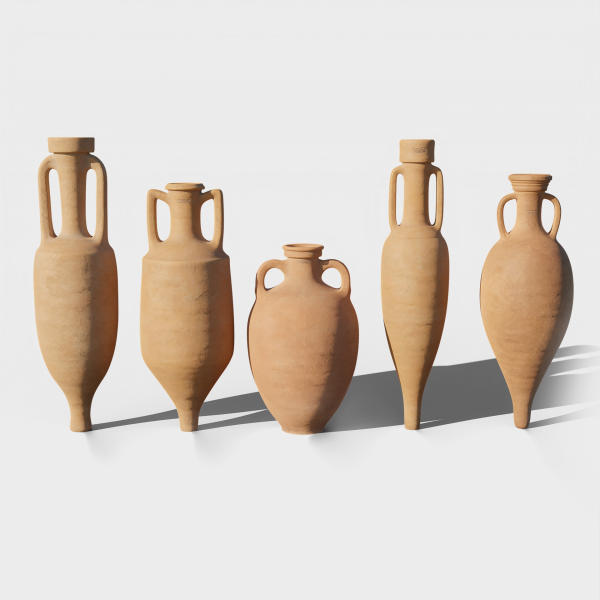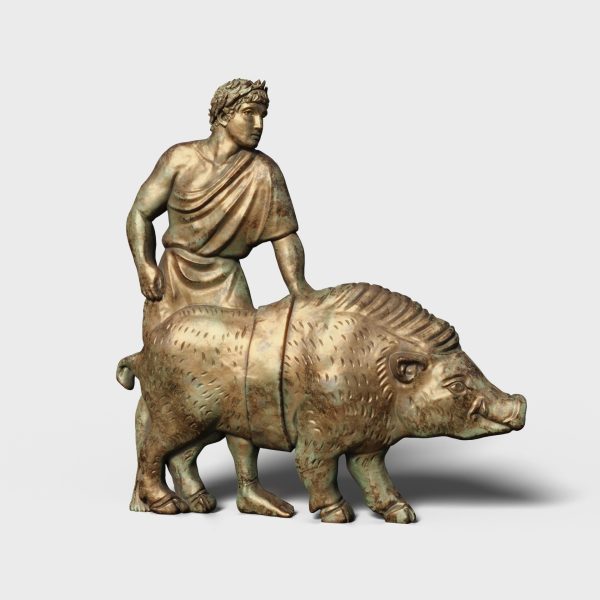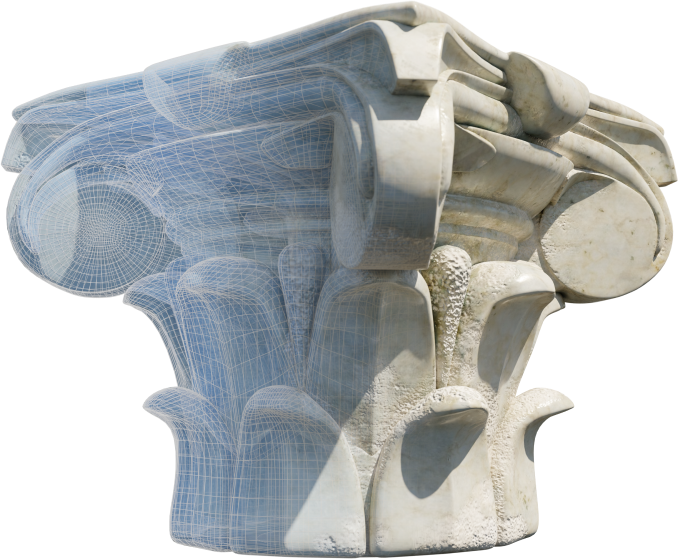
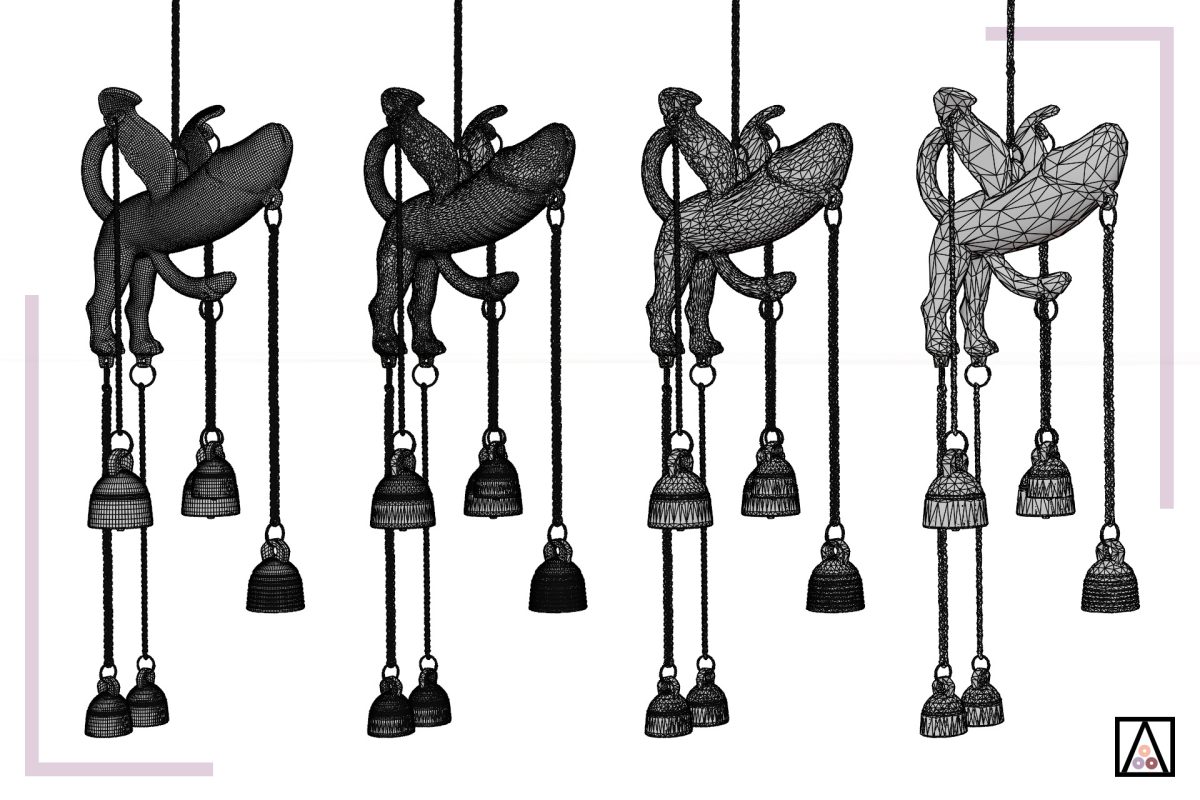
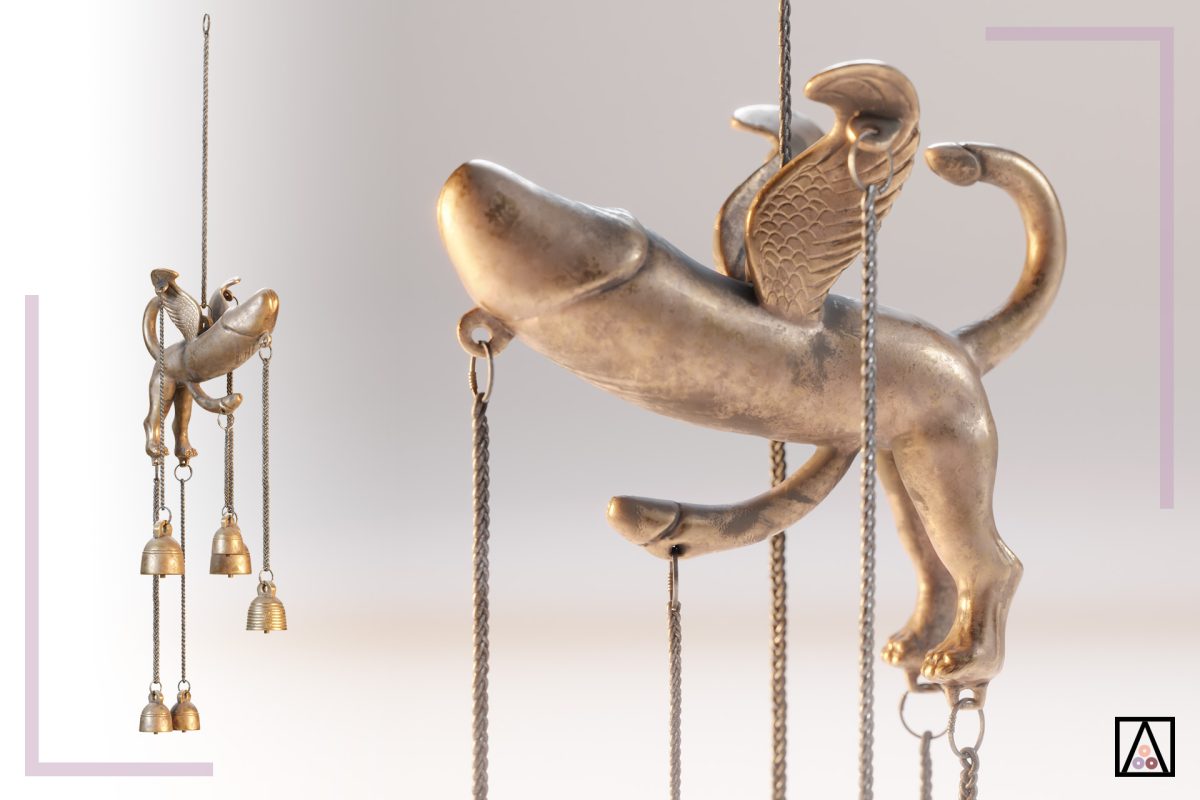
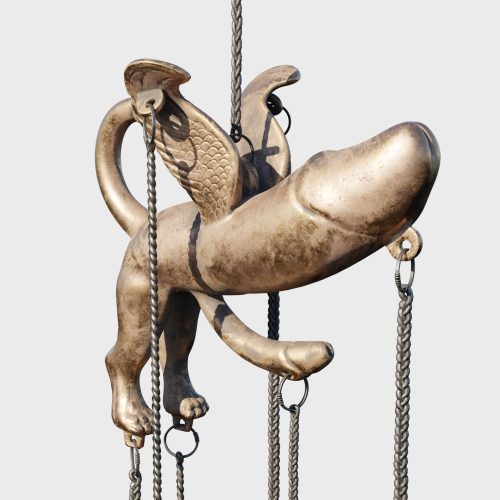

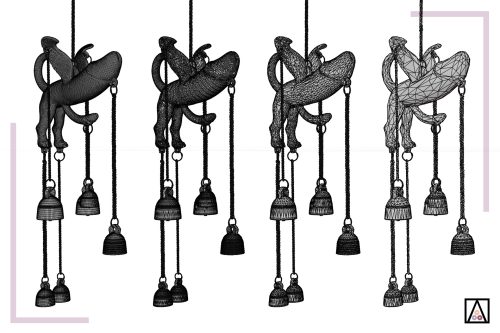

The tintinabula were, in the Roman world, bells that sounded with the wind, they were placed in gardens, porticoes, domus and shops in Ancient Rome. They frequently had a phallic shape (fascinum) with a religious and superstitious meaning, being an amulet of good luck, fortune and prosperity. The object you see here is based on a Roman bronze tintinabulum currently in the British Museum dating from around the s. I AD Similar pieces have been found at Vesuvian sites, such as Pompeii and Herculaneum.
LOD0: 112K Poly / 224K Tris
LOD1: 44K Poly / 67K Tris
LOD2: 14K Poly / 20K Tris
LOD3: 6k Poly / 6K Tris
Game Ready Model
Formats: .FBX; .OBJ; .blend.
PBR materials (JPG/PNG)
Texture maps: Base Color, Normal Map, Metallic, Roughness, AO, Height.
Texture resolution: 1K, 2K and 4K.
Rigged: No
Animated: No
Mask for color alternatives: No
Pablo Aparicio Resco
BLÁZQUEZ MARTÍNEZ, J.M. (1984): "Tintinnabula de Mérida y de Sesamón (Burgos)". En Zephyrvs, Nº 37. Pp.331-335. (Read it here: https://revistas.usal.es/uno/index.php/0514-7336/article/view/7804/7830 )
NEIL PARKER, A. (2018). "The Bells! The Bells! Approaching Tintinnabula in Roman Britain and Beyond", en Material Approaches to Roman Magic, pp. 57-68
You can consult the British Museum website for further information about this piece: https://www.britishmuseum.org/collection/object/G_1856-1226-1086





